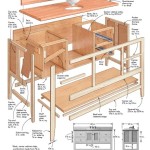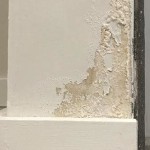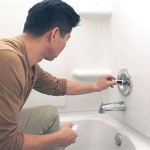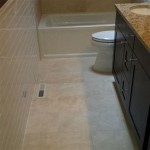How to Repair Caulking Around Bathroom Sink Cabinets
Caulking is a crucial component in maintaining a bathroom's functionality and aesthetics. It acts as a sealant, preventing water from seeping into the crevices and creating a breeding ground for mold and mildew. Over time, caulking around bathroom sink cabinets can deteriorate due to moisture, temperature changes, and constant use. Repairing the caulking is essential to prevent water damage, ensure a clean and hygienic environment, and preserve the longevity of the cabinets. This article will guide you through the process of repairing caulking around bathroom sink cabinets, ensuring a successful and long-lasting fix.
1. Preparation and Tools
Before embarking on the repair process, it's crucial to gather the necessary materials and tools. This will streamline the process and ensure a successful outcome. The following tools are essential for repairing bathroom sink cabinet caulking:
- Utility Knife: This tool is used for cleanly cutting the old caulking and removing excess sealant.
- Caulking Gun: A caulking gun is used to apply the new caulking smoothly and efficiently.
- Caulking Remover: This tool helps remove old caulking quickly and effectively.
- Cleaning Rags: Rags are used to clean the area before and after applying new caulking.
- Gloves: Protecting your hands from the chemicals in caulking is essential.
- Safety Glasses: It is always prudent to wear safety glasses to protect your eyes from debris and chemicals.
- New Caulking: Choose a high-quality, mildew-resistant silicone caulk designed for bathrooms.
- Mineral Spirits: Mineral spirits are used for cleaning the area before applying new caulking.
2. Removing Old Caulking
The first step in repairing caulking around bathroom sink cabinets is removing the old, deteriorated caulking. This process requires care and precision to avoid damaging the surrounding surfaces.
- Prepare the area: Clear the area around the sink and cabinets, ensuring that nothing obstructs your work. This might involve removing toiletries, decorative items, and any other objects.
- Cut the old caulking: Use a utility knife to carefully cut the old caulking along its length, creating a clean line for removal. This makes the process easier and prevents damage to the surrounding surfaces.
- Remove the old caulking: Using a caulking remover tool, gently pry out the old caulking. If the caulking is stubborn, a putty knife can be used to assist in the removal process. Ensure not to apply excessive force, as this can damage the surrounding surfaces.
- Clean the area: After removing the old caulking, thoroughly clean the area with a damp cloth. It is essential to remove any remaining residue, ensuring a clean and smooth surface for the new caulking.
3. Applying New Caulking
With the old caulking removed and the area cleaned, you are ready to apply the new caulking. This process requires precision and care to ensure a smooth, professional, and long-lasting finish.
- Prepare the caulking gun: Load the caulking gun with the new caulk. Ensure that the tip is cut at a 45-degree angle to ensure smooth and even application.
- Apply the caulking: Starting at one end of the area, apply a thin, continuous bead of caulking. Maintain a steady pace and apply even pressure to ensure a consistent and smooth line.
- Smooth the caulking: Using a damp finger or a caulking tool, smooth the caulking into the desired shape. Ensure that the caulk is pressed firmly against the surfaces, creating a tight seal.
- Clean up excess caulking: Use a damp cloth to wipe away any excess caulking immediately after application. This ensures a clean and professional finish.
- Allow the caulking to dry: Once the caulk is applied, allow it to dry completely before using the sink or cabinet. This can take anywhere from 24-48 hours, depending on the temperature and humidity levels.
By following these steps, you can successfully repair the caulking around bathroom sink cabinets. Remember to use high-quality caulk, take your time, and be careful when dealing with sharp tools. These will ensure a long-lasting and aesthetically pleasing result.
How To Re Caulk A Bathroom Sink Ifixit Repair Guide

How To Clean Remove Reapply Caulk In Kitchens And Bathrooms

4 Ways To Fix A Gap Between Vanity And Wall

Should You Caulk Around A Bathroom Vanity Bathtubber

How To Caulk A Bathroom Sink

How To Fill Gap Between Vanity And Wall 7 Solutions

How To Caulk A Bathroom Sink

Should You Caulk Around A Bathroom Vanity Bathtubber

How To Caulk A Shower Or Tub True Value

The Best Tricks How To Remove Caulk
Related Posts







